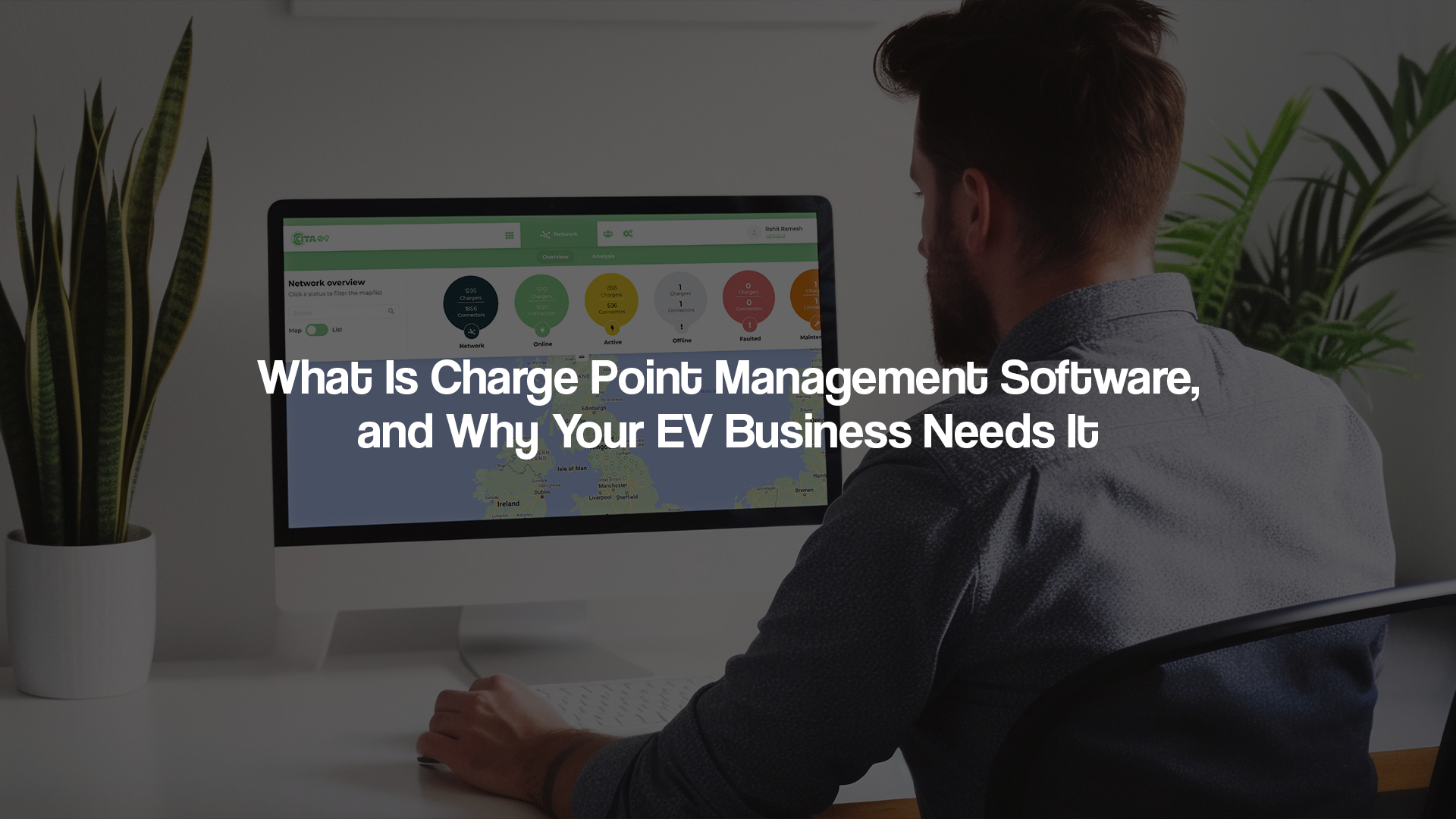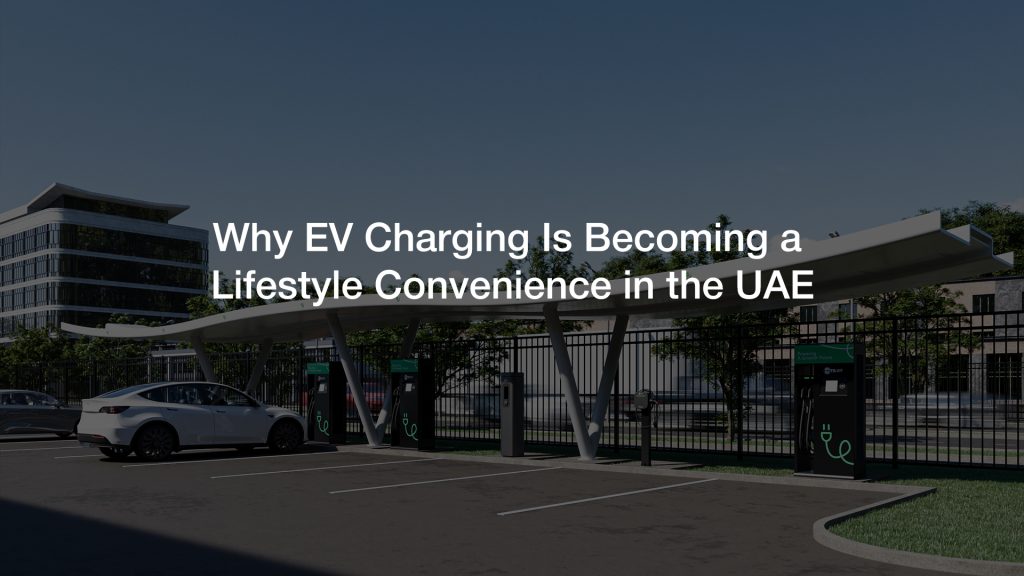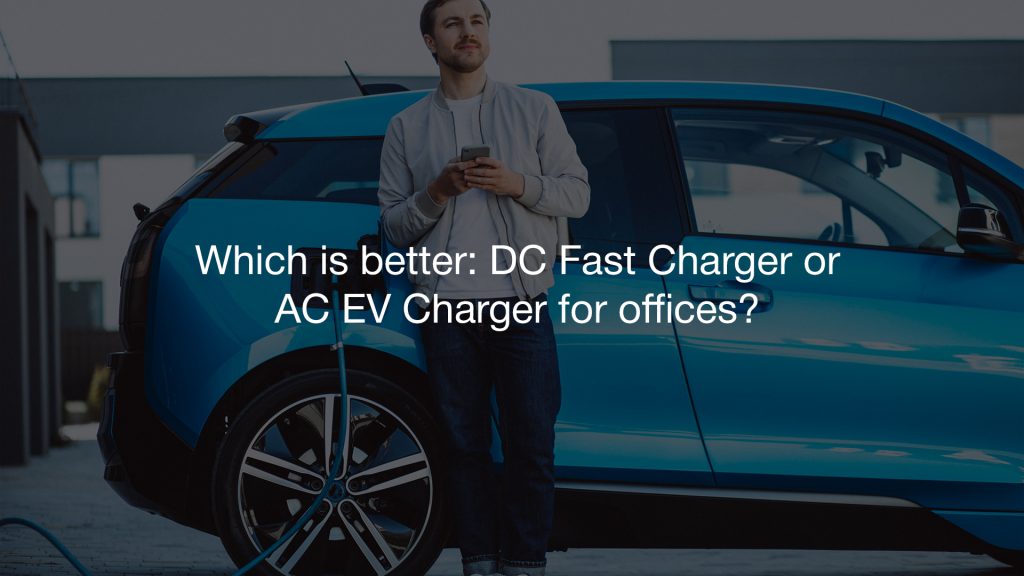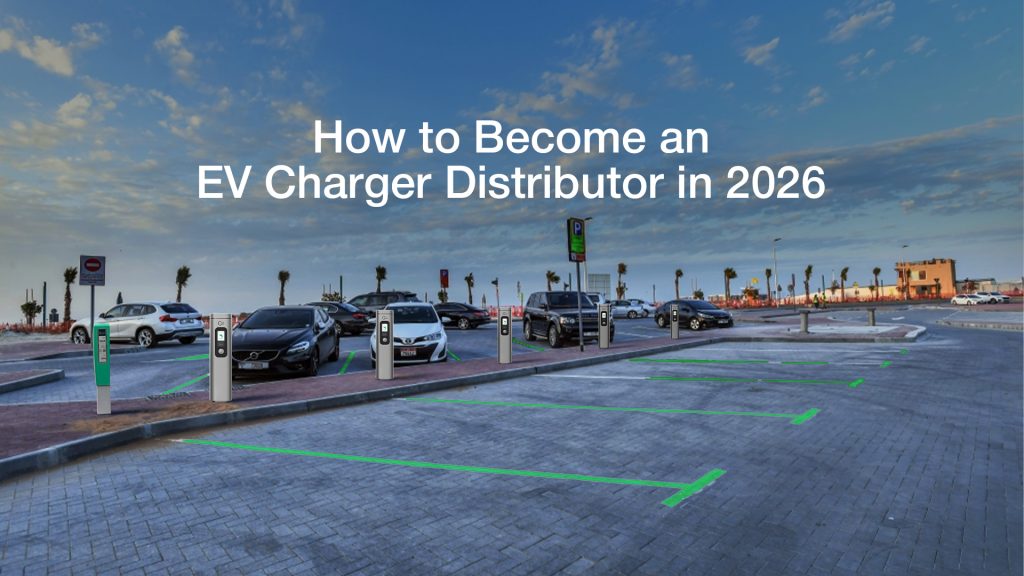Dubai’s EV infrastructure isn’t just expanding – it’s accelerating. As of early 2025, DEWA’s Green Charger initiative has served over 20,900 registered EV users, supporting more than 1,100 charging points across the city. In the first quarter of 2025 alone, usage climbed 23.6% compared to the same period in 2024, bringing the total electricity delivered since 2015 to more than 39,159 MWh and covering 195 million kilometres of EV travel.
But it’s not just about hardware. Behind every smooth charging experience—in malls, airports, petrol stations, or office towers – is Charge Point Management Software (CPMS). This intelligent system handles real-time availability, dynamic load balancing, user authentication, payments, and maintenance alerts. Dubai’s Green Charger programme integrates CPMS at every level, making backend coordination as crucial as the chargers themselves.
What Is Charge Point Management Software (CPMS)?
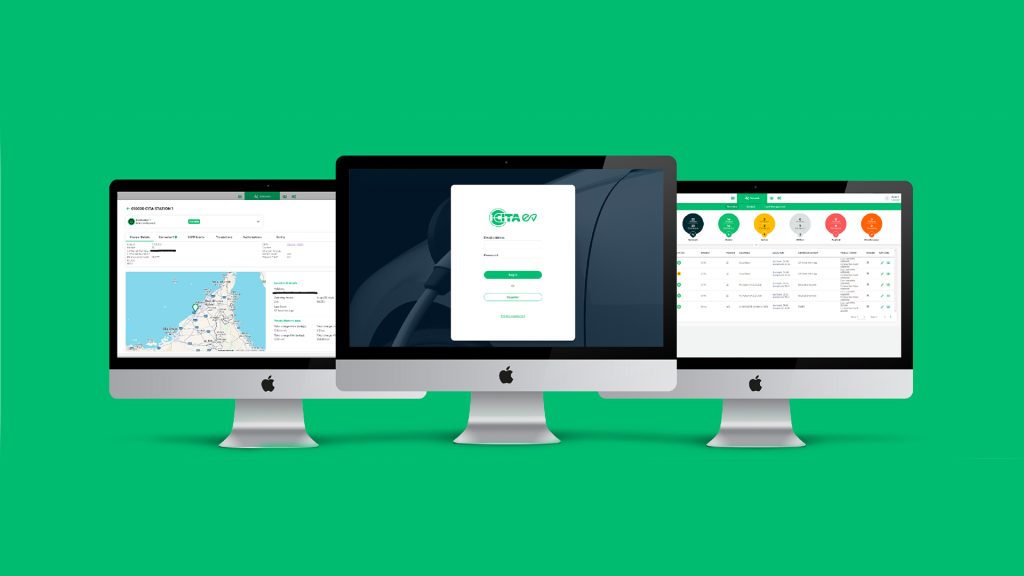
Think of Charge Point Management Software (CPMS) as the control tower for your EV charging network. It’s the backend system that lets you monitor, control, and optimize the performance of multiple EV chargers in real time – whether it’s a smart EV charger in a hotel parking lot or a DC EV charger at a highway fast-charging station.
At its core, a CPMS connects EV chargers, users, and operators in one digital ecosystem. It’s used by commercial EV charger suppliers, workplace EV charger suppliers, and public transport EV charger suppliers to make the whole operation efficient, secure, and profitable.
Why Charge Point Management is Crucial for EV Charging Businesses in the UAE?
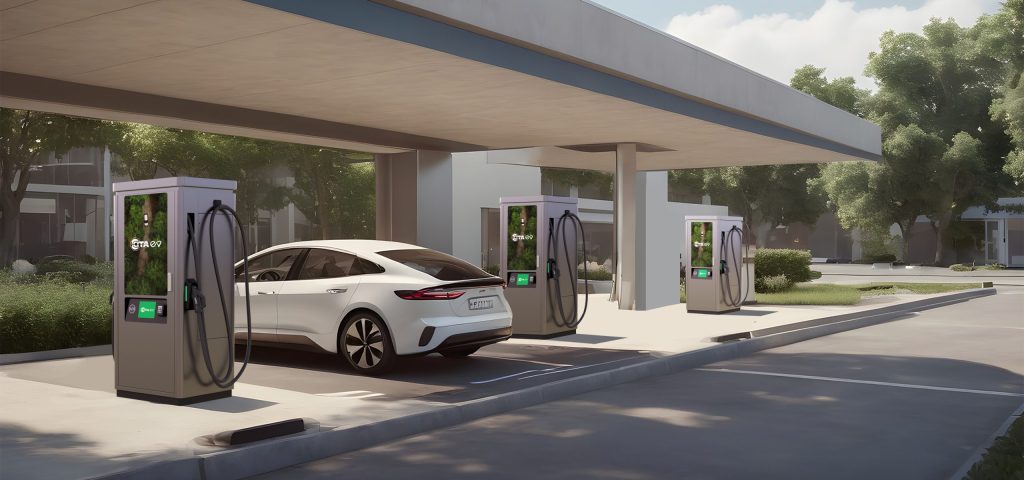
With thousands of EV chargers being installed across the Emirates and EV adoption growing by the day, running a charging network without a solid digital backbone is a recipe for chaos.
Here’s why Charge Point Management Software isn’t just a nice-to-have – it’s a non-negotiable for any serious EV charging operation in the UAE.
1) Scale Without Chaos: Handle 10 or 1,000 Chargers Like a Pro
Managing a small fleet manually is doable – until it’s not. As your network grows, so do the complexities: more users, more energy consumption, more locations, and more support tickets. Charge Point Management Software lets you scale effortlessly by automating monitoring, control, and maintenance across hundreds of chargers—without losing visibility or control.
2) Stay Compliant: Meet the UAE's EV Charging Regulations
Authorities like DEWA (Dubai Electricity and Water Authority) and ADQCC (Abu Dhabi Quality and Conformity Council) require EV chargers to meet strict communication, safety, and performance standards. A certified Charge Point Management Software helps ensure you’re always audit-ready—with real-time logs, automated reporting, and easy access to compliance documents.
3) Customize by Location: One Network, Many Use Cases
From office towers in Downtown Dubai to beachside resorts in Ras Al Khaimah, charging stations serve very different needs. CPMS allows you to set custom tariffs, session rules, and user permissions per site. That flexibility makes it ideal for UAE operators serving mixed-use environments – commercial, residential, retail, and beyond.
4) Deliver a Premium User Experience: Fast, Easy, Hassle-Free
In a service-driven market like the UAE, customer satisfaction makes or breaks your brand. Whether it’s a tourist at a hotel or a daily commuter in a parking garage, users expect charging to be fast, easy, and glitch-free. A good CPMS integrates seamlessly with mobile apps, payment platforms, and loyalty programs to keep users coming back.
5) Future-Proof Your Network: Be Ready for What’s Next
The UAE is moving fast on smart mobility. Your chargers need to keep up. A strong Charge Point Management Software supports OCPP (Open Charge Point Protocol), which ensures your network remains flexible and able to integrate with new chargers, backend tools, and apps as EV tech evolves.
Key Features of a Charge Point Management Software (CPMS)

The hardware might get all the attention – the sleek DC chargers at a mall or the wall-mounted AC units at a hotel – but it’s the Charge Point Management Software (CPMS) that keeps everything humming in the background. Think of it as the digital control room that EV charger providers, operators, and even governments rely on to keep public and commercial charging networks running efficiently.
In a place like the UAE, where EV infrastructure is scaling fast and spread across everything from luxury hotels to logistics depots, CPMS isn’t just useful; it’s essential.
Let’s break down what a strong CPMS actually delivers.
1) Real-Time Monitoring and Diagnostics
A reliable CPMS gives operators a live snapshot of every charger in the network. You can instantly see which chargers are available, which ones are in use, how much power they’re drawing, and whether any units are showing faults. For certified EV charger providers, this isn’t just a convenience—it’s a business-critical tool.
Early fault detection means you can resolve minor issues before they turn into service outages. It also means fewer angry calls from users trying to charge at a non-responsive unit. In high-footfall areas like malls or transport hubs, uptime is everything. Real-time visibility helps keep chargers online and users satisfied.
2) Remote Control and Configuration
Gone are the days when an engineer had to be dispatched for every minor issue. With CPMS, you can restart a DC EV charger, adjust charging rates on the fly, lock or unlock stations, and push firmware updates—all from your dashboard.
This is especially valuable in regions like the UAE where chargers may be deployed across multiple emirates. Remote capabilities dramatically reduce response times, cut down on operational costs, and keep charger performance at its peak without the constant need for on-site intervention.
3) User and Session Management
Today’s EV users expect more than just a plug—they want an experience. A good CPMS integrates with mobile apps, allowing users to locate nearby EV chargers, check availability in real-time, book a slot, start charging sessions, and pay—all from their phones.
Meanwhile, administrators can monitor and manage individual user sessions, track energy delivered, and even apply access controls for staff, fleet drivers, or loyalty program members. For retail EV charger suppliers and hospitality EV charger suppliers, this feature is what turns a basic charger into a customer-friendly service.
4) Energy Management Integration
Electricity isn’t cheap—especially during peak hours. CPMS can help optimize power usage by aligning EV charging activity with local energy tariffs or renewable energy sources like rooftop solar.
For instance, the system can automatically delay a scheduled charge until off-peak pricing kicks in, or it can prioritise charging during periods of high solar output. This is not only smart economics but also aligns with the UAE’s sustainability targets under initiatives like the Dubai Clean Energy Strategy 2050.
5) Reporting and Analytics
What’s working? What’s underperforming? Where should you invest next? CPMS provides comprehensive reports across a range of metrics: charger uptime, energy delivered, session durations, revenue per location, and more.
Operators can segment data by charger type (like AC EV chargers or DC EV chargers), by location, or by user group. This data isn’t just useful—it’s powerful. It lets commercial EV charger suppliers, fleet operators, and city planners make smarter decisions backed by real-world usage.
6) Multi-Site Control
Whether you’re a healthcare EV charger supplier managing 50 hospitals or a city authority overseeing 500 charging points, you don’t want to juggle 30 dashboards. A robust CPMS brings everything under one roof—one login, one platform, total control.
From Abu Dhabi to Fujairah, you can manage operations, schedule maintenance, update pricing, and monitor uptime across all locations from a single dashboard. This level of centralized oversight is key for scalability, especially as EV adoption accelerates in the UAE and more complex networks come online.
What Makes a CPMS Reliable and Effective?

Not all Charge Point Management Software is built the same. If you’re investing in one, it needs to be more than functional—it has to be flexible, secure, and ready for scale, just like CITA EV Charger’s CPMS.
Here’s what truly separates a dependable CPMS from the rest:
1) Open Standards Compatibility: OCPP Isn’t Optional
Make sure the system supports OCPP (Open Charge Point Protocol)—it’s what allows chargers and software from different manufacturers to work together. This future-proofs your investment and gives you the freedom to mix and match hardware across your network without vendor lock-in.
2) Built to Scale: From Pilot Projects to National Networks
A solid CPMS should handle everything from a single AC EV charger at a villa to hundreds of DC fast chargers at commercial hubs. As your footprint grows, the platform should scale with minimal friction—without compromising speed, performance, or stability.
3) Rock-Solid Cybersecurity: Lock It All Down
Your CPMS handles sensitive data: user credentials, billing info, energy usage, and system controls. Look for end-to-end encryption, role-based access, and secure APIs. In a high-profile market like the UAE, where EV infrastructure is increasingly tied to national energy goals, security isn’t a feature—it’s a baseline requirement.
4) Custom Dashboards: The Right Info for the Right People
5) 24x7 Support and Continuous Updates: Because Downtime Isn’t an Option
Tech doesn’t sit still—and neither should your software. Choose a CPMS software provider that rolls out regular updates, adds new features, and offers round-the-clock technical support. Whether it’s a charger outage at 3 a.m. or an integration query on a Friday, help should be a click or call away.
Seamless Integration: Why Hardware–Software Sync Is Non-Negotiable
No matter how advanced your Charge Point Management Software is, it can’t do much without the right hardware – and vice versa. For an EV charging network to run smoothly, both the software and chargers must be fully aligned and built to communicate seamlessly.
The CPMS depends on the charger hardware to support key protocols and functions. At the same time, the hardware needs the software to coordinate, monitor, and control how it performs on a daily basis. When that link is broken or poorly integrated, the result is slow performance, billing errors, downtime, and user frustration.
A reliable EV charging setup ensures:
- Full support for OCPP (Open Charge Point Protocol) for smooth communication between hardware and software
- Real-time response to commands like start, stop, reboot, and update
- Live data exchange for session tracking, energy usage, and fault alerts
- Secure authentication through RFID, QR code, or app-based access
- Load management and smart scheduling are controlled via CPMS
- Compatibility with future software updates and remote configurations
When your hardware and CPMS are designed to work as one system, everything – from charger availability to payments – runs more efficiently. Without that alignment, even the best tools on either side fall short.
Don’t Just Install Chargers. Manage Them Smartly with CITA’s CPMS

CITA EV Charger combines certified hardware and intelligent Charge Point Management Software (CPMS) to deliver exactly what UAE businesses and drivers need – efficiency, control, and a seamless charging experience.
From AC to ultra-fast DC EV chargers, every unit is backed by real-time monitoring, remote diagnostics, and user management, all through CITA’s powerful CPMS. It aligns perfectly with the region’s regulatory standards and energy goals, offering unmatched reliability across sectors.
If you’re ready to modernise your EV infrastructure with a trusted partner, explore CITA’s all-in-one solutions.
Book a free consultation, request a product demo, or speak with our team today—and take the lead in shaping the UAE’s smart mobility future.



